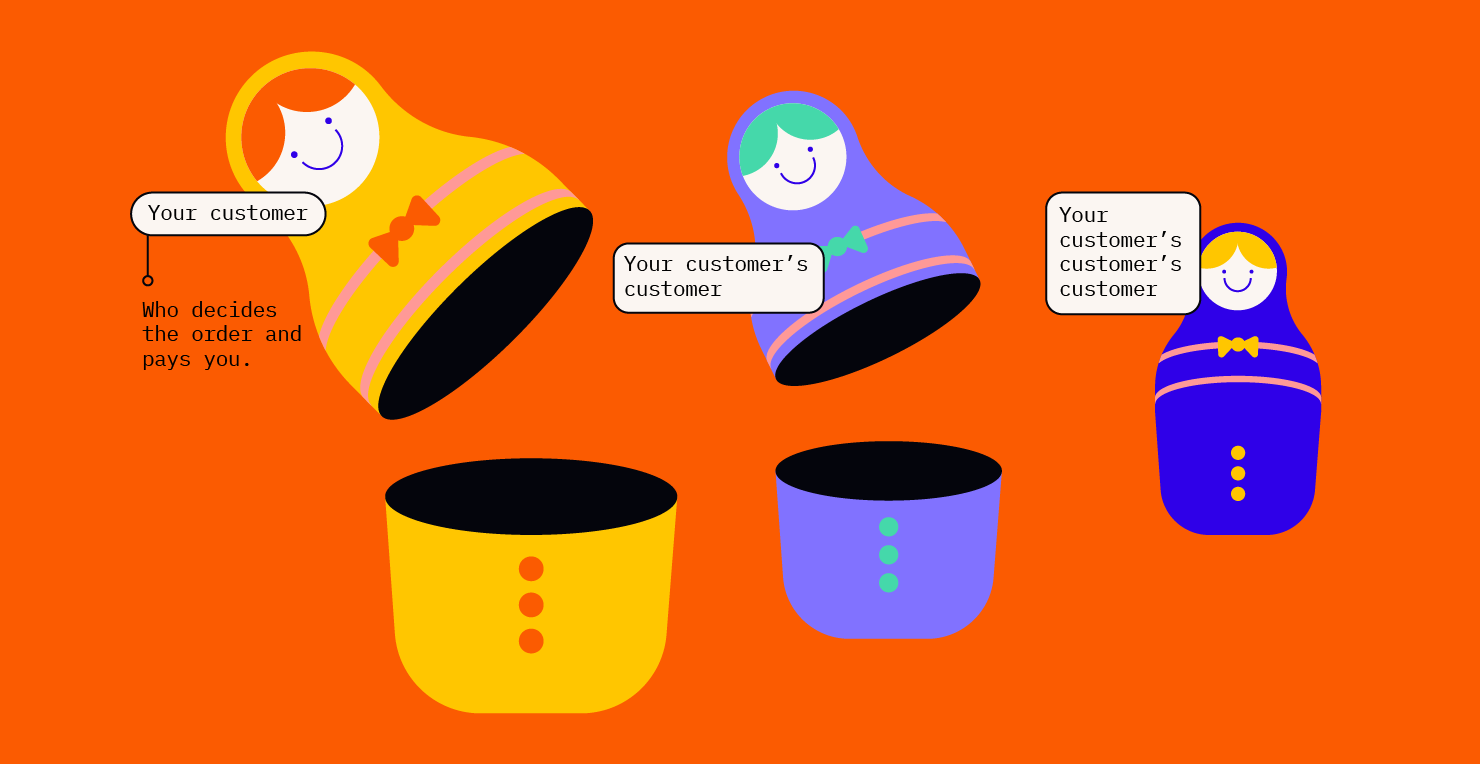It's hard to find a company whose leaders don't believe that the customer is at the center of all they do.
Unfortunately, despite the common claim of customer centricity, many companies make it difficult for customers to become and stay customers.
After working with hundreds of companies to help leaders refine their consumer experience strategies, I continue to observe a disconnect between aspirations to be customer-centric and actually performing as a customer-centric enterprise.
One of the most common observations—across small and large organizations—is that the company culture determines how well the customer is driving strategy. Cultures that tolerate the customer getting lost in the pace of business are destined to become irrelevant.
This overview is to help you identify the disconnections and refine strategies to build a customer-centric culture. Let’s turn customer-centricity into an operational reality, not a marketing slogan.
What Does It Mean to Have a Customer-Centric Culture?
A customer-centric culture exists when a company is aligned at all levels to continually focus on customer needs and desires. This focus drives decision-making so that customers are reliably supported and the offerings become indispensable.
A customer-centric culture in any industry drives long-term success. Creating one requires a sincere appreciation of customer values and behaviors, and a commitment to continually align decision-making, resources, strategies, talent, and processes with customer desires.
Building a culture that honors the customer throughout the enterprise begins with leaders embracing the concept, modeling aspects of a customer-centered culture, and reinforcing the commitment in day-to-day operations.
Customer-centric cultures boil down to staying relevant for the customers of today and preparing to stay relevant for future customers.
Staging a reliably exceptional customer experience requires that the systems, processes, and policies of the company keep the customer relationship and customer success at the top of every list.
Reliably exceptional experiences lead to high customer satisfaction and customer loyalty, creating reliable profitability and growth.
8 Ways to Start Building a Customer-Centric Culture
Exceptional customer cultures don’t just happen. Deliberate and thoughtful strategies must be in place to continually inspire the workforce to be passionate about customer needs.
Here are some first steps to focus on:
1. Adopt metrics that aren't mediocre
Too often companies adopt goal metrics that seem to be achievable and not necessarily remarkable. In pursuing a customer-centric culture, the objective should not be satisfied customers but raving fans.
Instead of aspiring to meet customer expectations, stretched thinking should drive a focus on exceeding the customer's imagination.
I worked with a major car dealership that needed to address the waiting experience for customers waiting for their cars to be serviced. They engaged the frontline staff to refresh the service experience, including renovations to the space.
They exceeded expectations by thoughtfully offering complimentary beverages and different types of seating such as hardback, softback, open space seating, and private space seating for those who wanted to work.
They pushed further to exceed the imagination of their service customers by also offering each person a complimentary massage or manicure while they waited.
These unexpected perks helped build word-of-mouth promotion since they were truly remarkable and differentiated their service offerings from the competition.
2. Extreme listening to the frontline supports exceptional customer cultures
All companies collect customer feedback in one form or another. How well the research is shared and applied is inconsistent. Although satisfaction or dissatisfaction scores are important indicators of trends, companies need a robust approach to listening deep and wide to customers.
Frontline staff can be prepared to constantly capture insights and listen with their ears, eyes, and hearts and to be fully present to gather insights to strengthen the culture not just chase scores.
This can be achieved by outlining desired behaviors clearly at new employee orientation, offering ongoing customer delight training programs, and implementing accountabilities that reward connecting customer insights to operations improvement.
3. Attract, retain, and develop customer-passionate talent
Who we allow to join the company, and who we allow to stay in the company, drives a healthy or dysfunctional culture overall. Since the customers keep the company in business, the hiring process should not only focus on knowledge, skills, and experience but also customer engagement and commitment.
One way to hire for customer passion is moving from a hiring process to an audition experience. Group interviews, where finalists for a role participate in a video call and respond to customer support scenarios, help to identify who stands out in terms of positive energy, empathy, clear communications, and in-the-moment problem-solving skills.
4. Commit to exceptional staff experiences to support customer delight
The concept that happy, valued employees are better prepared to support happy, loyal customers is not new but still isn't the case in many companies. The idea of creating a positive and satisfying work experience is complex since industries have such diverse structures.
Some companies have geographically dispersed team members, or have a home-based remote workforce, while others have highly educated specialists working with entry-level support staff.
No matter what the workforce type, making sure that every employee feels valued and that they're proud to be part of the team is an important goal.
Wegman's grocery chain is one company well known for its commitment to happy employees. They’ve established an “employees come first, customers second” culture to prepare the workforce to serve the customers well.
This approach has led to low turnover and loyal customer fans. Wegman’s has been a best place to work company for over 20 years with many reports attributing this to investments in staff education and extensive local community involvement which build pride.
The long tenure of employees drives consistency, and a commitment to listening to employee ideas has helped fuel their top ratings in the American Customer Satisfaction Index report on retail and consumer shipping and loyal customers.
Examples of how this commitment comes to life are on the Wegman’s website with this introduction “At Wegmans, we’re dedicated to creating a culture where each of our employees feels empowered to take charge in their careers and to know that their voices are valued.”
5. Prioritize what customers are seeking, not what you're selling
Most marketing strategies focus on clearly communicating the benefits of a product or service and finding characteristics that help differentiate from the competition.
The traditional focus on what's being sold, or the attributes of any solution, may or may not connect well with customers. A customer-centric culture expands the sales and marketing focus to what customers desire to solve or obtain.
When a customer visits any home improvement store to purchase a drill, it's easy for sales staff to share information on the size of the drill, the type of power used, and pricing because the focus is on the product.
But, if the store sales staff take time to understand what type of hole the customer is trying to make, a customer relationship can grow and opportunities to move toward authentically assisting customers with all they hope to achieve.
6. Require that the customer is represented in decision-making
It may be common to review customer surveys as strategic decisions are made, however sustaining a customer-centered culture requires that the customer, or customer's view, is meaningfully represented at the leadership tables throughout the company.
A “customer delight leader” needs to be designated in the ongoing decision-making process to raise questions about the impact on customer effort, customer relevance, and likely intended and unintended customer reactions.
This may be a formal department of customer success professionals or a shared responsibility among different departments. Either way, an authentic customer-centric culture requires that customer views are proactively considered.
7. Allow customer choice in how they interact and transact with you
Discover Card is well known to allow customers to connect with them using channels they're most comfortable with.
Their digital framework allows easy and comprehensive access to guidance and support, but they also offer easy and responsive access to live agents who are well-informed and who have the authority to assist customers beyond what's typical.
Customer-centric cultures accept the fact that customers desire different ways to connect in different situations and, as the digitization of business continues, those who also offer more personal paths will stand out from the competition.
8. Dig deeper to know the customer's customer
Depending upon your industry, there may be a big difference between the needs of the customer (the person you are actually having a financial transaction with), and the consumer (the people who ultimately use what you sell).
Merck Pharmaceuticals is a good example since they make medicines for patients with certain conditions. The patient is the ultimate consumer, but their customer may be the pharmacy that dispenses the drugs, the physician who prescribes the drug or benefit managers at health insurance companies.
Your customer/consumer model may not be this complex, but digging deeper into all the customer-connected stakeholders will support a more customer-centric culture.
Challenge your teams to see how much they know about each of these influencers who are important to your ultimate customer.

Charting A Customer-Centric Path Ahead
The first step in the pursuit of a culture that truly puts the customer first is to take a fresh look at your current state and to be open to new approaches.
Beginning with the end in mind requires that what's measured and expected of the workforce makes it very clear that the creation of raving fans is not optional.
This is supported by a commitment to hiring people who can be passionate about that goal, creating a great work experience, and listening to them as they work with customers and customer journeys each day.
Finally, the systems, policies, and processes in place (how stuff gets done in your company), must be aligned around customer needs and desires.
Operationalizing customer delight will help connect the dots for a culture that serves the customer well and ultimately sustainable company profitability and growth.
You might also like: 10 Best Customer Success Software


